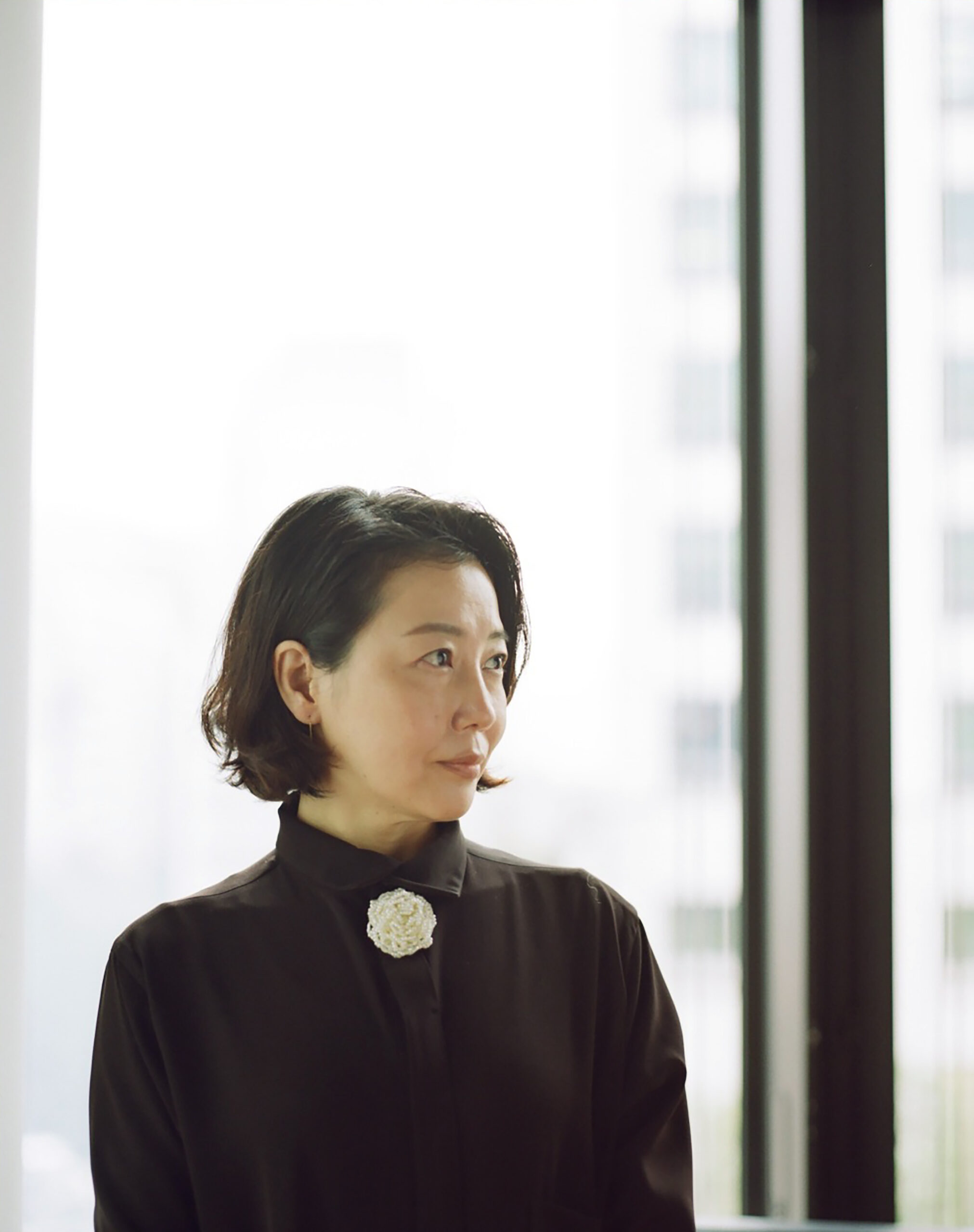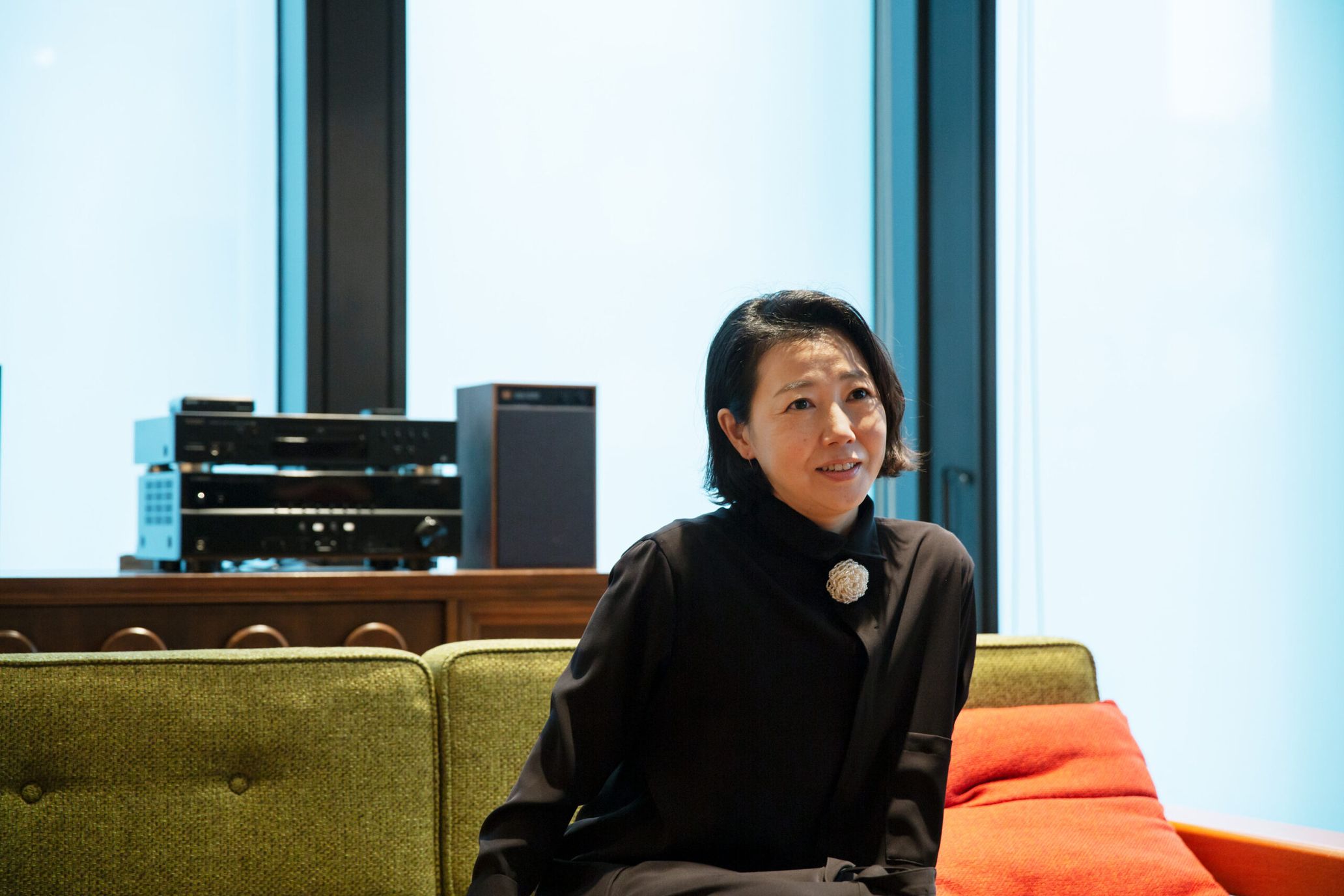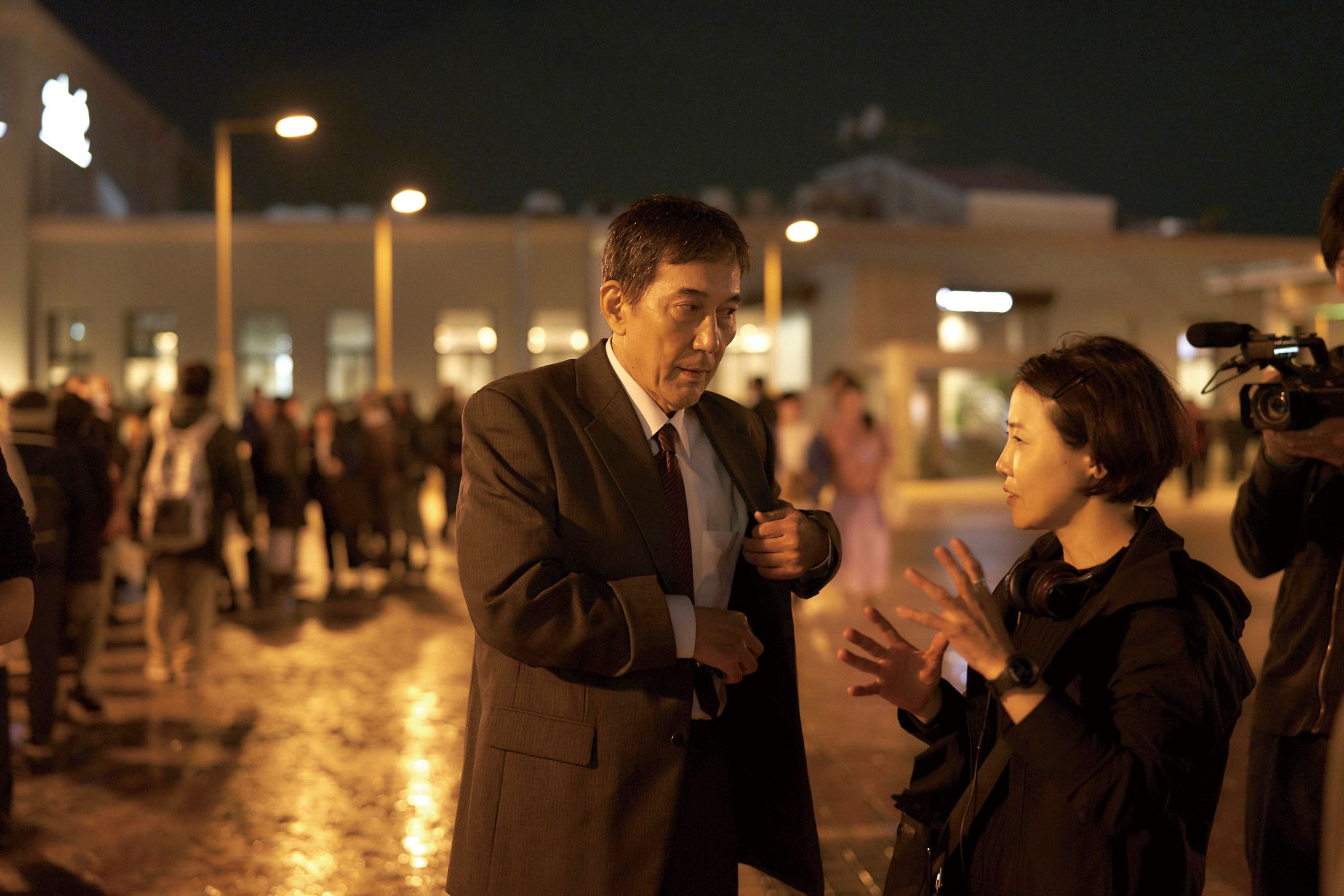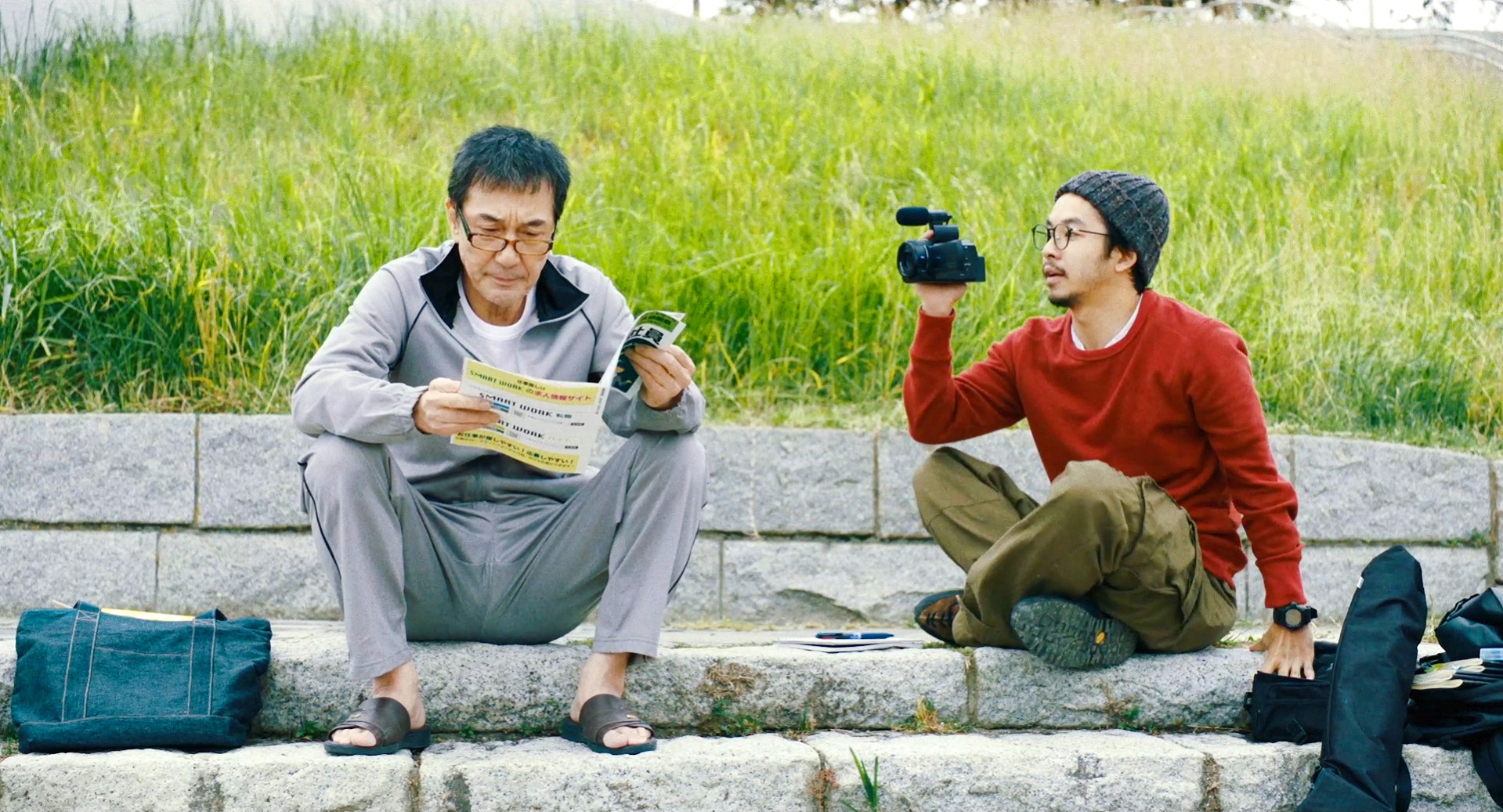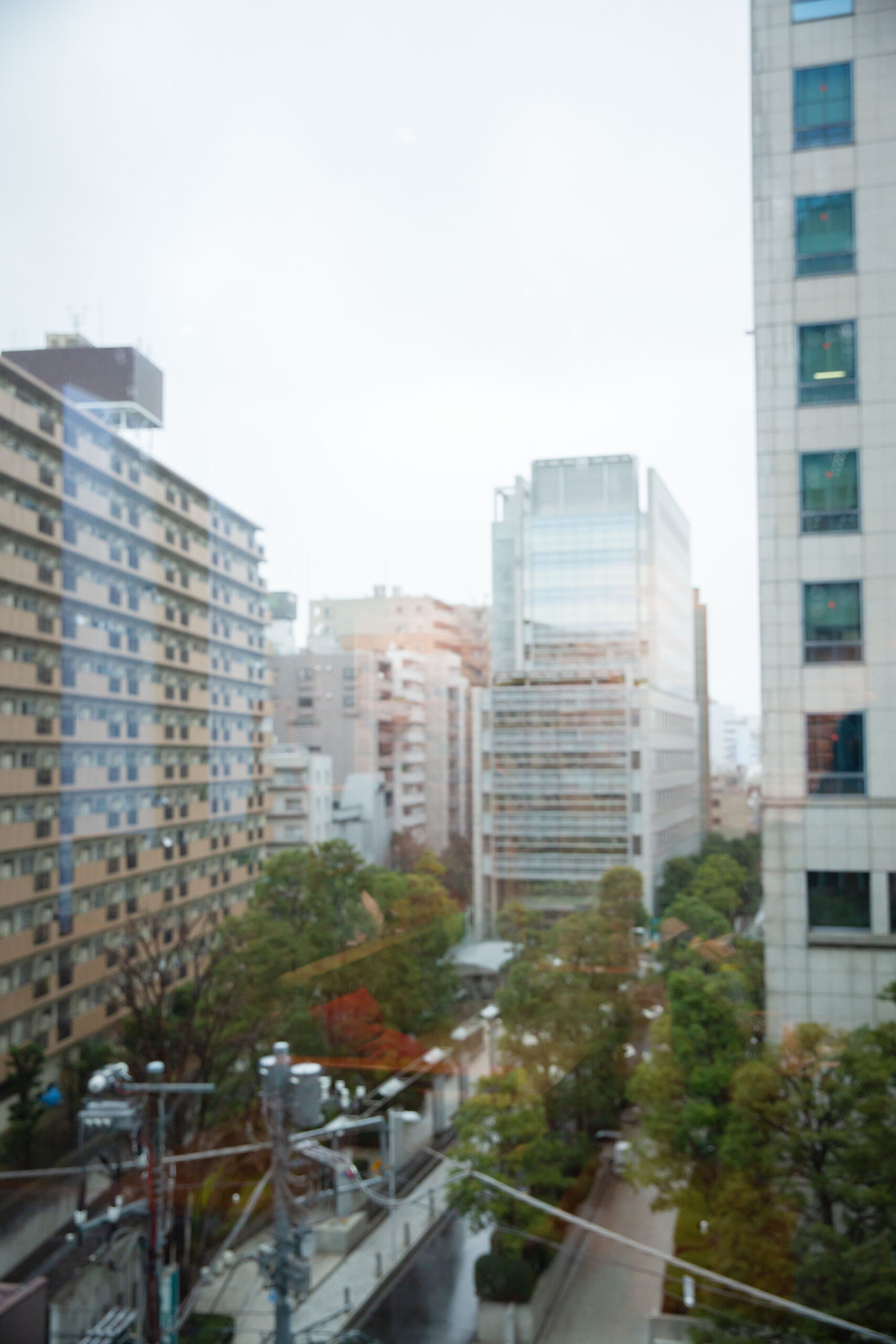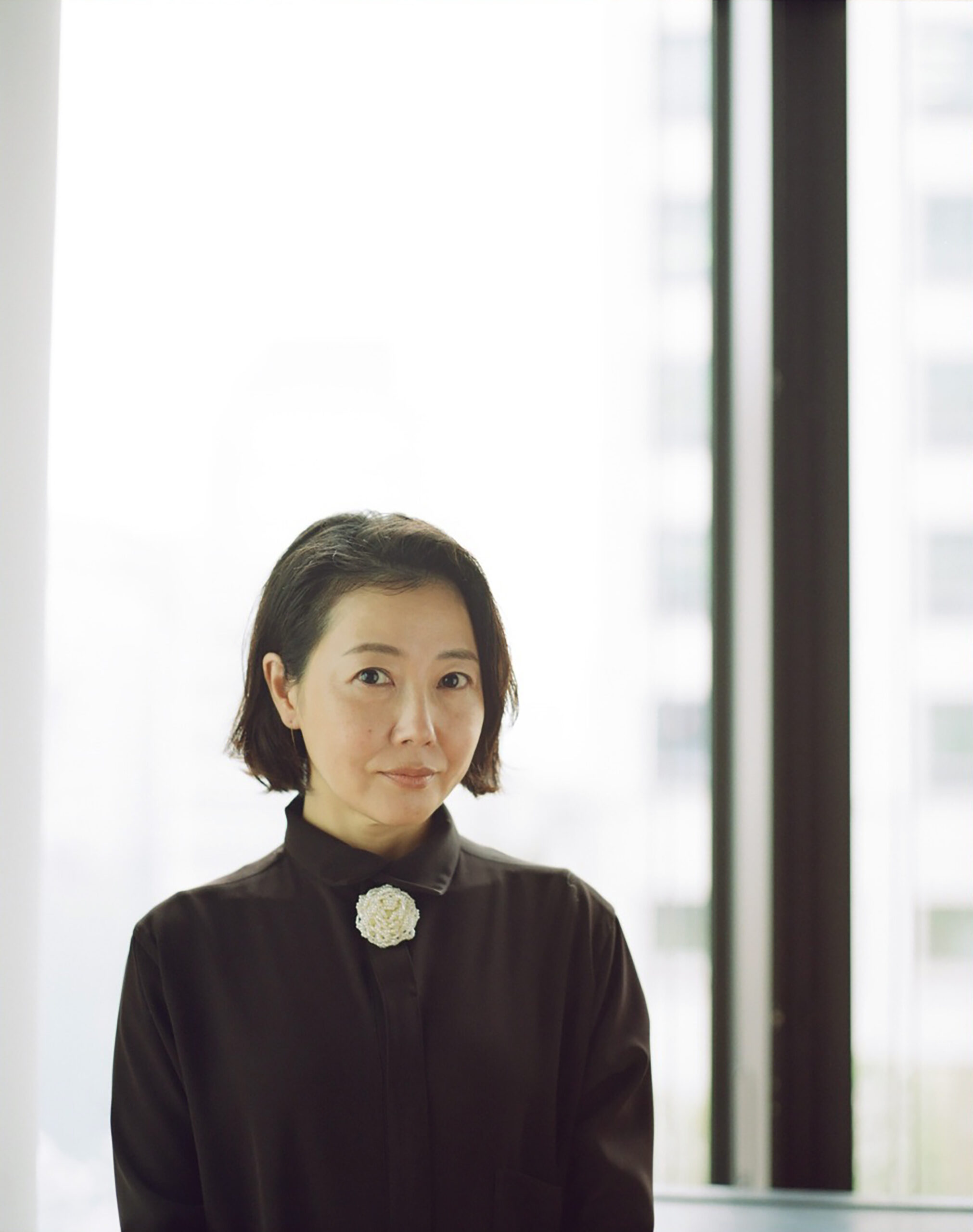Culture can be born out of a specific time and place, and yet, it possesses the ability to become timeless. In this series, “時音,” TOKION invites people who are shaping culture today to talk about the past, present, and future.
In this article, I talk to Miwa Nishikawa, the director of “Under the Open Sky,” which was released nationwide on February 11th, 2021.
This is an interview about a film that portrays the true nature of humankind—plus a little more. That “little bit more” regards a certain quality that this great work possesses. The quality that makes me want to talk to someone about this film, no matter how many years have gone by. This isn’t a Japanese language test, so there’s plenty of room for interpretation, but I’ve been spending my days daydreaming as I digest the film. If I’m going to have the opportunity, I definitely want to ask her about it. Even if it diverges from interview norms, I have to ask if I have the chance.
Altogether different from the novel and condensed into two hours, this is a story that needs to be told in today’s world
The man spent most of his life in prison. He was separated from his mother at a young age and didn’t have a family register. No one was looking for him. What was his life like after being released? The novel “Mibuncho” was written over 30 years ago based on this true story. For Director Miwa Nishikawa, this was her first project based on a novel; up until now, she had created movies based on her original works and ideas. The author of the novel, Ryuzo Saki, and the man the story is based on, Akiyoshi Tamura, are no longer with us today. Thus, she needed to do a lot of careful research for this work. The result is a story that needs to be told—one that is unique to the two-hour film and altogether different from the thick novel. To be more specific: “Under the Open Sky,” is an honest portrayal of a society that’s difficult to live in. It depicts the human warmth that lies in the gaps and edges of the kindness and harshness, or ease and difficulty, that we experience in such a society. This may be the true meaning of warmth. I had a feeling that this was what “Under the Open Sky” was trying to tell us.
The production of “Under the Open Sky” began with a visit to Asahikawa Prison in February of 2017. Director Miwa Nishikawa stood there at the same time and place described in “Mibuncho,” and tried to feel what it was like on the day of his release. This was the view of ”shaba” (the world outside of the prison) that Mr. Tamura himself had once looked at after thirteen years. This view that Ryuzo Saki depicted in “Mibuncho,” the same view that Director Miwa Nishikawa took in, is shared with us in the first scene of the movie. Asahikawa is blanketed with a thick layer of snow. The smoky sky is not quite blue, despite it being sunny out. Masao Mikami, the protagonist of the film, gets on a bus headed towards the station after his release. The scenery begins to move, and the sky follows. Like that, the story begins to unfold.
This is a bit off-topic, but I’d like to talk a little about the movie “Sway,” which I saw 15 years ago, and an interview piece in the magazine AERA that I read after “Sway” was released. This piece was amazing. Director Miwa Nishikawa responds to the reporter’s questions clearly with her own words and way of speaking. All of her responses are beautiful in how organized they are. On top of that, she leaves enough space for us to imagine ourselves in the story. I immediately saved the page. Whenever I interview someone or am interviewed, I use Director Miwa Nishikawa from that interview as an example. That’s still true today. “Sway” was really incredible. It starts like a road movie. The sky is filled with clouds and appears to be blue, but isn’t. Cheerful music plays. At that moment, I wouldn’t have thought that the protagonist is heading to a memorial service for his mother or that his childhood friend would die soon after. From the swift current of the river to the water running from the hose at the gas station, there is something wet on screen. As with her later films such as, “Dear Doctor” and “The Long Excuse,” Director Miwa Nishikawa’s words and writing—whether an interview, a novel, or an essay—are always beautiful and easy to look at. Easy to read. Yet, when I’m done watching or reading, the answer that I thought I had a moment ago disappears somewhere. Before I know it, something that was in the film is transposed into my life.
Director Miwa Nishikawa’s latest work, “Under the Open Sky,” is a story based on a real person, which means the outcome of the main character’s life has already been determined. Thus, there’s no intentionally created mystery or suspense. The protagonist, Masao Mikami, constantly has his hands full with the processes required for survival after his release. But it’s not a boring story. Director Miwa Nishikawa clearly and carefully depicts Mikami’s day-to-day after a dramatic event. In this way, the story extends to our world, so it’s no longer someone else’s problem.
I should add that the scenes from “Under the Open Sky” that leave an impression are things like Masao Mikami gazing absentmindedly at the sky from the window of his 40-year-old apartment building, the wet roads after he heads to Kyushu where his sworn brother lives, or the skies that are smoky rather than blue. As with all of Director Miwa Kawashima’s works, there’s no doubt that I’ll talk to my friends about the sky in “Under the Open Sky.”
“I think it’s difficult to treat people with a constant kindness and gentleness. If you get a call at a bad time, there are times where you just end up responding gruffly. I think even caseworkers, who are so kind and encouraging, sometimes raise their voice to say, ‘Cut it out!’ So that can make someone feel like, ‘Wow, everyone is so cold.’ It’s common for a person to forget all the nice things others have done for them and feel hurt. Both sides are living their truth, but when things don’t go well, it’s easy to enter a vicious cycle. I think Masao Mikami is the perfect example of someone who gets hurt in that situation. You feel anxious as you watch the movie. But when Masao Mikami calls up his lawyer, his lawyer is very happy on the other end of the phone. That makes Masao Mikami very happy, so he laughs and cries. When he looks up, there are stars out in the dusk sky. Those stars are very small, and they’re swaying as if it had just been raining. It’s not exactly a star-filled sky, but don’t you think that’s Director Miwa Nishikawa’s sky?”
I think that’s the kind of thing I’d say to many of my friends. That’s why I’m urging them to hurry to the theaters to see “Under the Open Sky.”
About Director Miwa Nishikawa and her new movie, “Under the Open Sky”
――The bus after his release. The train headed to Tokyo. The driving school car. The bike on the way home. The expression of the protagonist, Masao Mikami, when he’s riding something left an impression on me. But in the original work, there were no depictions of vehicles. Was there something you wanted to express through these scenes?
Miwa Nishikawa (Hereinafter Nishikawa): I hadn’t thought about that. But if I try to think about why I used vehicles, nearly all the other scenes involve people confronting each other in ways that sting, so if I didn’t move people around at some point, you wouldn’t be able to catch your breath. So, I think I included the scenes with moving vehicles as a cushion.
――Masao Mikami, who is gradually starting to get the hang of life, has a small electric heater in his apartment. It isn’t turned on, though. I think that “Sway” and “The Long Excuse” are the same in this respect, but why don’t heating devices appear in the winter scenes?
Nishikawa: I think it’s because more of my stories take place in the summer than in the middle of winter. With this movie, I was very particular about shooting the snow in winter in Asahikawa, but after his release, the story takes place before the middle of winter, up until the season when the cosmos flowers are in bloom. So if there was a later scene in the middle of winter, I think that the electric heater would probably be on.
――In “Kouro Byoushijin,” the addendum to “Mibuncho,” Ryuzo Saki wrote the following. There was talk of adapting Yoshiaki Tamura’s life into a drama, and when Ryuzo Saki and others asked him who he would like to play the main role, Tamura very sheepishly put forward the name of a manly, handsome actor. You looked into it further, and apparently, he had answered that the actor was Ken Takakura. The drama adaptation never became a reality, but after some time, now you’ve made it into a movie. In the story, there’s a scene where Masao Mikami breaks down crying on the grounds of the orphanage where he once waited for his mother. That was a poignant scene. After that, when he has his back washed by Tsunoda at the sento, there’s the protagonist’s back and Tsunoda’s wet eyes. Somehow, the tears we see in that story overlap with the story where Ryuzo Saki ran to the bathroom with tears flowing from his eyes.
Nishikawa: Before we started filming, I took a look around at the orphanage where Masao Mikami spent his early childhood. He had already passed away, so I wasn’t able to meet him directly, but I tried to put myself in the protagonist’s shoes. The emotions of a grown man, who after being separated from his mother and without a family register, is fixated on the faint memory of his mother. That isn’t something that you can easily experience first-hand. Plus, a drama about searching for your mother is overdone, and is that really a topic that should be made into a film at this point? There were times when I thought I should leave this part out. But it was when I actually went to the orphanage and saw the children who are living there now. Although it was faint, I felt that the protagonist’s unquenchable loneliness and craving for love were at the core of who Masao Mikami is. In the stage direction (the portion that directs the movements of the actors), I only write actions rather than emotions, but the ability of Koji Yakusho, who plays Masao Mikami, to interpret the script was the amazing part—like why he comes to a certain place at a certain time and cries. He didn’t ask me a single question, but I think he understood how [Masao Mikami] felt. He said, “If you think about it, you feel bad for the guy.”
――Although Masao Mikami himself is very earnest and intends to act with integrity, he’s shunned because he stands out in a so-called “normal” society. I know people with personalities like Masao Mikami. While watching the film, it occurred to me that I’m closer to that side too, which was painful.
Nishikawa: There are people like that. Several people come to mind.
――I can feel kindness and warmth towards marginalized people through the characters that appear around Masao Mikami. The author of the original book, Ryuzo Saki, wrote with that kind of perspective. You mentioned that the TV director, Tsunoda, played by Taiga Nakano, was responsible for that part of the story in the film, but was your perspective reflected here as well?
Nishikawa: Ryuzo Saki’s writing isn’t very emotional. He writes about the good and the bad, and it’s great that he doesn’t go out of his way to make it interesting. It made me think I’d like to strive for that kind of ability. To the extent possible in “Under the Open Sky,” I tried to honestly portray more than just the good parts of the main character and the people around him, or rather, the fact that people aren’t always warm, and that they can have misunderstandings.
――This is your first project based on a novel. In terms of the work process, is it easier to make a film based on a novel that you wrote yourself?
Nishikawa: This movie was really fun. The original book was incredible, and I could be more confident about it than something I wrote myself. But that doesn’t mean I’m necessarily going to work with existing novels going forward, and it’s also fun to make a film from something I wrote myself. So in any case, I’m hoping to find ways of doing things that I haven’t done before.
――Regarding what a “subarashiki sekai” [The title of the original movie, which translates to “A wonderful world”] is for movie lovers: Since the coronavirus pandemic, I’ve realized something again. That it’s an incredible thing that we were able to buy tickets at a movie theater and immerse ourselves in a story. Maybe even Masao Mikami had gone to a movie theater before. If the main character of “Under the Open Sky” were to go to the movie theater, what do you think he would watch?
Nishikawa: I think “The Avengers.” (laughs) The times have changed. I think he’d be confused by making reservations to see something in theaters.
About the sky in the film: What I wanted to ask Director Miwa Nishikawa
――I’ve thought this before while watching your past work. The sky isn’t that pretty, or I guess, even though it’s sunny out, it’s not a strikingly blue sky.
Nishikawa: What’s an example of a movie with a strikingly blue sky?
――Maybe “Shine” or “Porco Rosso.” The main character, a pianist, is on the trampoline and he’s jumping up in slow motion into the bright blue sky. Or the scene of Porco Rosso circling in the blue sky over the Adriatic Sea while leaving contrails behind. I don’t mean that blue skies are essential. Just that in your movies, I’ve never seen any strong, picture-perfect skies, like with crescent clouds, sunsets, or lots of stars. My friend and I were going back and forth about whether or not you were doing it on purpose, getting excited about a conversation with no answer. I felt that about “Under the Open Sky,” but in your past feature films such as “The Long Excuse,” “Dear Doctor,” and “Sway,” even though the skies are clear, the blue is hazy or smoky. “Dreams For Sale” is almost entirely rainy. So I thought that if I had the opportunity, I’d like to ask about your sentiments regarding the skies in your movies.
Nishikawa: I’d never really thought about it before.
――It just occurred to me that like with David Fincher’s “Seven,” it might be because you’re what they call a rain man or rain woman. “Seven” is set in Los Angeles where it barely rains, but apparently there was continuous rain during the filming.
Nishikawa: In any case, I’m a rain woman. If it were sunny out, I’d like to film cumulonimbus clouds too, but those clouds have never come out. With “Under the Open Sky,” the cinematographer, Norimichi Kasamatsu, was worried about the weather from the start. It was often clear out until we were heading to the location, but once we’d decide to start shooting, the clouds would appear.
――That’s the secret to the skies in your movies.
Nishikawa: But with my movies, the scenes become more atmospheric if it’s a bit cloudy. For example, in this film, in the scene where Masuko Shimoinaba, played by Midoriko Kimura, and Masao Mikami are talking, it rained even though it wasn’t supposed to be a rainy scene. But the two of them parting in a wet dusk is lonelier and more romantic, so I thought it worked. For the filming of “Sway,” we were getting rained on the whole time, but the incident on the suspension bridge is more atmospheric on a cloudy day than a sunny day. So surprisingly, the clouds save me.
With films from other directors, they might wait for a blue sky and try to shoot it. But Director Miwa Nishikawa shoots scenes with the sky as it is in the moment, resulting in a more atmospheric shot and creating a strong contrast with the next scene. Even in “Under the Open Sky,” the documentary-style sky creates amazing scenes. I thought this was in sync with the way the main character is viewed by Ryuzo Saki and the other characters, a perspective which Director Miwa Nishikawa was determined to express as it was. I’m sure I’ll be talking about Miwa Nishikawa’s films with someone for years to come. With a triumphant look, there’s no doubt I’ll talk about why the sky isn’t blue. And when I do that, I’ll picture the smoky sky that Masao Mikami looked up at. The sky after the rain, with just one small star shining.
Miwa Nishikawa
Miwa Nishikawa was born in Hiroshima in 1974. Her directorial debut, “Wild Berries,” (2002) won the award for best screenplay at the 58th Mainichi Film Festival. Her second feature film, “Sway” (2006), was officially selected for the Directors’ Fortnight at the 59th Cannes International Film Festival and had a nine-month-long theatrical run in Japan. Her next film, “Dear Doctor” (2009), won first place in the 83rd Kinema Junpo Ten Best Japanese Films. Since then, she has also expanded overseas, participating in the Toronto International Film Festival with “Dreams For Sale” (2012) and “The Long Excuse” (2016). She has written several novels and essays, and her novel “Kinou no Kamisama,” based on her medical research in a remote area for “Dear Doctor,” and the novel “The Long Excuse,” which she wrote prior to the production of the film by the same name, have both received high acclaim including a nomination for the Naoki Prize.
The movie: “Under the Open Sky”
Director / Writer: Miwa Nishikawa
Cast: Koji Yakusho, Taiga Nakano, Isao Hashizume, Meiko Kaji, Seiji Rokkaku, Yukiya Kitamura, Hakuryu, Midoriko Kimura, Masami Nagasawa, Narumi Yasuda, and more.
Original story: “Mibuncho” by Ryuzo Saki (Published by Kodansha Bunko)
Distributor: Warner Bros. Pictures
©️Ryuzo Saki / 2021 “Under the Open Sky” Production Committee System
In theaters nationwide from February 11th, 2021.
subarashikisekai-movie.jp
Photography Takeshi Abe
Transration Aya Apton

